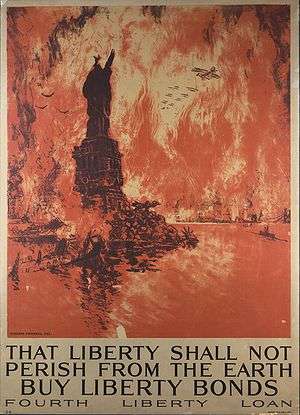Joseph Pennell

Joseph Pennell (July 4, 1857 – April 23, 1926) was an American artist and author.
Biography
Born in Philadelphia, and first studied there, but like his compatriot and friend, James McNeill Whistler, he afterwards went to Europe and made his home in London. Joseph Pennell had many etchings that depicted historic landmarks in the city of Philadelphia. His etching of Wakefield- Fisher’s Lane was created in 1882. This was the mansion of William Logan Fisher which was standing until 1985. It would have been located on the corner of Ogontz and Lindley Avenues near La Salle University's St. Basil Court.[1] He wrote and illustrated an anti-Semitic travel book, The Jew at Home: Impressions of a Summer and Autumn Spent with Him (D. Appleton: New York, 1892), based on his travels in Europe. In his preface he writes, "I am neither a Jew hater nor a Jew lover," but he describes "the Austro-Hungarian or Russian Jew [as] the most contemptible specimen of humanity in Europe...dreaded by the peasant...loathed by people of every religion," he describes the typical Polish Jewish town as "a hideous nightmare of dirt, disease, and poverty; and...all this disease and ugliness is in a large measure the outcome of their own habits and way of life," and later he says of Russian Jews, "They like dirt; they like to herd together in human pigsties;...they like to make money out of the immorality of the Christian. They are simply a race of middlemen and money-changers." [2] He produced numerous other books (many of them in collaboration with his wife, Elizabeth Robins Pennell), but his chief distinction is as an original etcher and lithographer, and notably as an illustrator. Their close acquaintance with Whistler led the Pennells to undertake a biography of that artist in 1906, and, after some litigation with his executrix on the right to use his letters, the book was published in 1908.[3]
He taught at Slade School of Art. He won a gold medal at the Exposition Universelle (1900), and 1904 Louisiana Purchase Exposition.[4]

Pennell visited San Francisco in March 1912, where he undertook a series of so-called "municipal subjects". These were exhibited in December 1912 at "the prestigious gallery of Vickery, Atkins & Torrey", according to Mary Millman and Dave Bohn, authors of The Master of Line: John W. Winkler, American Etcher , (Capra Press: Santa Barbara, CA, 1994). It is possible that Pennell's visit inspired San Francisco printmakers Robert Harshe and Pedro Lemos, along with sculptor Ralph Stackpole and painter Gottardo Piazzoni, to found the California Society of Etchers in 1912, now the California Society of Printmakers. Longtime members of California Society of Printmakers believe that Pennell was a member of the New York Etchers Club, established in 1877, although his membership in the New York Etchers Club is not confirmed.

Pennell did the poster for the fourth Liberty Loans campaign of 1918. It showed the entrance to New York City's New York Harbor under aerial and naval bombardment, with New York in flames and the Statue of Liberty partly destroyed, her head and her torch blown off.[5] He taught at the Art Students League of New York.[4]
Little Wakefield
In 1880 Joseph Pennell created Little Wakefield which is an etching of the Little Wakefield estate.[6] It is a 'small' home that is located on what is now South Campus of La Salle University, currently called St. Mutiens hall. This estate was built by Thomas Fisher in 1829 and was occupied by his families for generations however, it is now currently the residence of the Christian Brothers of the University.[7] The etching of the estate created by Pennell was created almost fifty years after the house was built. It depicts the house lived in by the second generation of Fishers and it was a time where money was extremely scarce. Little Wakefield has served multiple purposes besides just residency. During World War I it was used as demonstration center for a local branch of the National League of Women's Service. Little Wakefield was also the location where Thomas R. Fisher ran the first knitting factory in America. [8]
Notes
- ↑ Butler, James. "Three Centuries on the South Campus". Digital commons.
- ↑ {{Pennell, Joseph, The Jew at Home (NY, 1892) https://archive.org/details/cu31924028574352}}
- ↑ Chisholm 1911.
- 1 2 "Joseph Pennell, Noted Artist, Dead; Won High Honors as Etcher and Illustrator, Later Taught Art and Wrote Books" (PDF). New York Times. April 24, 1926. Retrieved January 27, 2012.
- ↑ "Lest Liberty Perish from the Face of the Earth - Buy Bonds". World Digital Library. Retrieved 10 February 2013.
- ↑ "Pennell family papers, circa 1882-1951". dla.library.upenn.edu. Retrieved 2015-09-29.
- ↑ "Welcome to the La Salle Local History Web Page". www.lasalle.edu. Archived from the original on 2001-05-26. Retrieved 2015-09-29.
- ↑ "Welcome to the La Salle Local History Web Page". www.lasalle.edu. Archived from the original on 2015-10-26. Retrieved 2015-09-29.
References

External links
| Wikimedia Commons has media related to Joseph Pennell. |
- Works by Joseph Pennell at Project Gutenberg
- Works by Joseph Pennell at Faded Page (Canada)
- Works by or about Joseph Pennell at Internet Archive
- The Winterthur Library Overview of an archival collection on Joseph Pennell.
- Joseph and Elizabeth R. Pennell's papers at the Harry Ransom Center, University of Texas at Austin
- Joseph Pennell: an account by his wife, Elizabeth Robins Pennell, issued on the occasion of a memorial exhibition of his works, an exhibition catalog from The Metropolitan Museum of Art Libraries (fully available online as PDF)
- Finding aid for the Pennell family papers from the University of Pennsylvania Libraries

- "Pennell, Joseph". Collier's New Encyclopedia. 1921.
- "Pennell, Joseph". The New Student's Reference Work. 1914.
- "Pennell, Joseph". New International Encyclopedia. 1905.